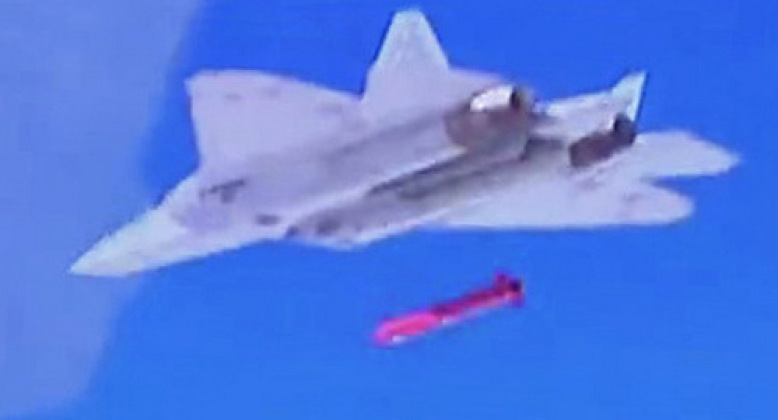News
Communications Systems on Russia’s Su-57 Fighter Imroving Rapidly: How a New AI-Secured Comms Suite Will Support Air Defence Duties

Russia’s Su-57 next generation fighter has begun to integrate a new radio communications suite secured by artificial intelligence, which was designed to improve information transmission between aircraft and ground-based systems operating on very high frequency wavebands. The Russian state owned defence conglomerate Rostec reported regarding the new system: “The equipment ensures data transmission validity by means of noiseless coding, message symbol interlacing, universal time synchronization for signal processing, simultaneous message transmission via parallel links, extending stable communication range, and using artificial intelligence technology.” The system used “cognitive radio technology” to enhance its “interference and intelligence immunity,” and included computers, interlacers and de-interlacers, high frequency band antenna tuners, digital signal processors and noiseless encoders and decoders.
Optimising communications with ground based assets is particularly important for the Su-57 as it was deigned to work closely alongside ground based air defence systems such as S-400s, which form the backbone of the Russian Air Defence capability alongside which air superiority fighters and interceptors play a more secondary supporting role. Unlike Cold War era heavyweight fighters such as the Su-27, the Su-57 was not primarily designed for deep penetration flights into NATO airspace but instead to close gaps in the ground based air defence network with its own powerful sensors and armaments. Ground based long range air defence systems boast far larger sensor suites that operate in more wavebands and can deploy a wider range of anti air missile classes, with the Su-57’s own suite of six radars able to provide highly complementary information to this from elevated positions in the stratosphere.
New enhancements to the Su-57’s communications and network centric warfare capabilities have been reported since the late 2010s, with a new combined system of communications, data exchange, navigation and identification (OSNOD) reported in September 2019 to have been tested and benefitting from enhanced encryption protection and anti jamming features. These were seen as critical to allowing the aircraft to function as part of a larger combat network and synergise its capabilities with those of other units including ground based air defence systems. Head of the Polet science and technical centre of the Russian Electronics holding Alexei Ratner stated at the time that alongside advanced new anti jamming technologies the system “ensures constant cryptographic protection of communications… In other words, intercepting them will produce no result.” The Ruselectronics Group reported the following year that the Su-57’s communications suite was “characterised by high reliability, speedy information transmission, a small weight and energy efficiency,” as a time when it was revealed that Russia’s Tu-22M3M bombers would use a communications system closely based on that developed for the stealth fighter. The fact that the Su-57 has a comparable range to smaller strategic bombers like the Tu-22M made use of a similar communication suite suitable.

Ruselectronics reported in July 2022 that a new communications system would be integrated onto the Su-57, elaborating: “Prototypes of the upgraded communications system are at the stage of their manufacture and their tests are scheduled for the middle of the fall, in particular, on the Su-57 aircraft.” Russia and before it the USSR have been developing fifth generation fighters for 44 years, although with the Soviet program to develop a more costly aircraft under the MiG 1.42 program cancelled due to its cost by post-Soviet Russia, the Su-57 program which has replaced it has suffered from significant delays. Ten aircraft are currently in service, although an increase to production means this is expected to increase by 12-14 airframes in 2023 and rise further in the following years. The fleet size is expected to reach 76 aircraft by January 2028. Although fielded in much smaller numbers than its Chinese and American counterparts, the Su-57 has the advantage of having been far more extensively combat tested including for more complex missions such as air to air combat and air defence suppression against a relatively capable state adversary in Ukraine.












